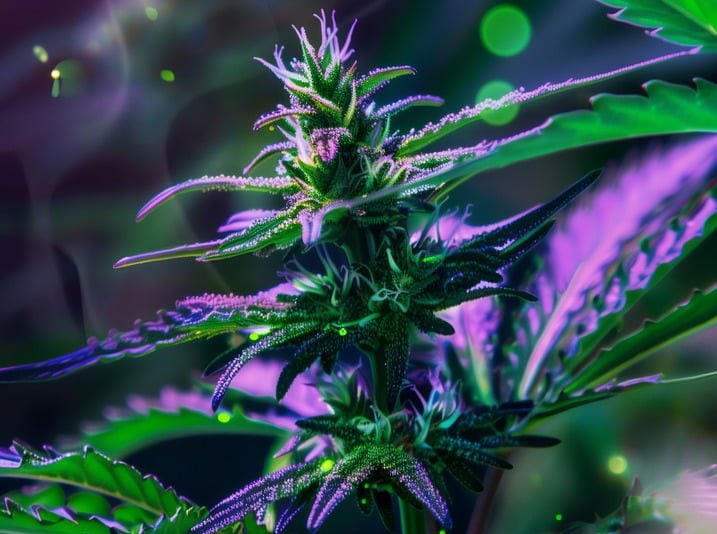Researchers from the Nanjing Agricultural University (NJAU) Academy of Science say they have found a crucial gene that directly impacts the number of flowering sites on a Cannabis sativa plant. Dubbed CsMIKC1, the gene was found to drive inflorescence development when overexpressed and hinder development when underexpressed.
The team also found that adding ethylene increased the gene’s expression. Together, the discoveries could directly impact the commercial Cannabis industry.
“Through gene editing and functional analysis, the researchers demonstrated the gene’s impact on flower production, highlighting its potential to transform agricultural practices,” explains the NJAU press release announcing the team’s finding. “This breakthrough sets the stage for developing high-yielding Cannabis strains tailored for both medical and industrial use.”
Cultivation of Cannabis Sativa
Although the cultivation of Cannabis has only recently started to become legal in parts of the U.S., methods to improve the quality and quantity of the plant’s flower buds have long been a goal of amateur growers and illegal drug operations alike. Most traditional to create higher yields include tried and true practices used in the cultivation of many crop species, including proper water, nutrition, and the correct ratio of sunlight to darkness.
There is also a burgeoning community of online growers who share their experimental methods for increasing bud production. This includes suggestions like using black lights, feeding the plant with specialized additives, or even playing music for the plants.
Now, large-scale, legal cannabis cultivation operations are looking to tap into the same advanced scientific methods used by commercial farming of food crops, including genetic modification. Of course, the design and use of these genetically modified organisms (GMOs) have been met with a lot of controversy, but that has not stopped large-scale farming corporations from taking advantage of the magic of genetic science to improve their own crop yields in a wide range of species.
Genetic Editing and the Addition of Ethylene
In their experiments, the NJAU team used CRISP-Cas9 gene editing to manipulate the expression of CsMIKC1 to determine whether it would affect the flowering of the Cannabis plant. This included programming plants to overexpress and underexpress the selected gene.
The researchers also chose to test their process on the Cannabis sativa strain, as it is known for the highest amount of flowering among the most commonly cultivated strains. For most medicinal and recreational uses, the flowers, or buds, contain the highest concentrations of the plant’s active cannabinoids, including the psychoactive THC.
After allowing the plants to flower, the team found that their theory was correct. The CsMIKC1 gene was functioning as a transcription factor, which meant it was interacting with two specific proteins, CsBPC2 and CsVIP3, to modulate the inflorescence development of Cannabis sativa. As a result, the team saw a significant increase in flowering sites on the plant programmed to overexpress the gene and fewer on the plant programmed to underexpress the gene.
“Transgenic plants overexpressing CsMIKC1 exhibited a substantial increase in inflorescence numbers, flower production, and grain yield, while CsMIKC1 mutants showed diminished growth and yield, highlighting the gene’s regulatory importance,” the press release explains.
The team also found that the activation of the CsMIKC11 gene seemed to be influenced by ethylene signaling pathways. In fact, when the team applied ethylene to the plants, flower production increased.
A Significant Step toward High-Yielding Strains
One of the study’s co-authors, Dr. Jianguang Su, said that identifying a single gene that appears to affect flowering sites on Cannabis sativa plants “marks a significant step forward” in the burgeoning field of Cannabis genetics.
“This gene is crucial in determining flower yield, which has profound implications for both medicinal and industrial uses,” Dr. Su added. “By utilizing genetic modification techniques, we can develop targeted approaches to optimize crop performance, enhancing the Cannabis industry’s potential. This research not only deepens our understanding but also opens up exciting possibilities for developing high-yielding strains.”
The study, “CsMIKC1 regulates inflorescence development and grain production in Cannabis sativa plants,” was published in Oxford Academic scientific journal Horticulture Research.
Christopher Plain is a Science Fiction and Fantasy novelist and Head Science Writer at The Debrief. Follow and connect with him on X, learn about his books at plainfiction.com, or email him directly at christopher@thedebrief.org.

